David McFall R.A. (1919 - 1988)
Sculptor
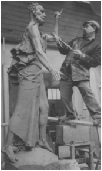
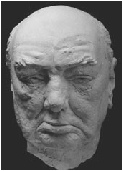
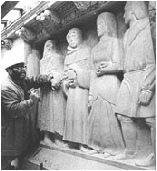
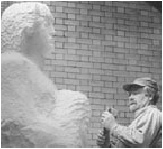
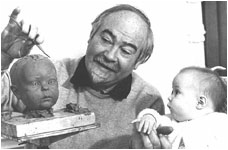
1974/4 Professor Sir George Grenfell-Baines
Portrait head
Height 12"
Bronze head mounted on dark green lakeland slate
Commissioned for Building Design Partnership, Preston
Obituary
Sir George Grenfell-Baines A pioneering architect, he developed an interdisciplinary approach to building
Christopher Ratcliff The Guar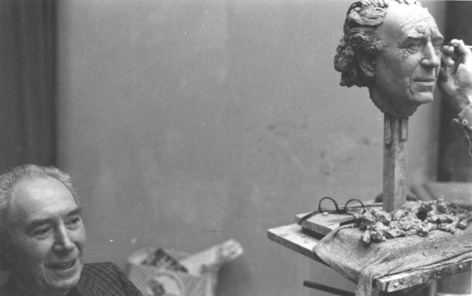 dian May 27 2003
dian May 27 2003
Sir George Grenfell-Baines, who has died aged 95, was probably the first British architect to recognise that the technical complexities of creating new buildings needed a new type of organisation to design them. His solution was to create a practice in which teams with many professional skills could work together with mutual understanding and respect for each other's design contribution. This all-in service ensured that architects, structural and services engineers, cost consultants, town planners and other specialists could each make their own unique contribution to a client's needs. A visionary leader, "GG", as he was known to all, emerged from a modest background to become the founding chairman of Building Design Partnership (BDP), which, over the last 40 years, has matured into the largest multi-professional design organisation in Britain, with strong international links.
GG was born in Preston, Lancashire, the eldest son of Ernest Baines, a railwayman. His mother, Sarah (née Grenfell), was a staunch Methodist, from whom her son inherited much of his talent and motivation. He did well at primary school, and gained a grammar school place - but the cost of a uniform was beyond the family's resources. He left school at 14 to work in the local rating surveyor's office, because, on his father's advice, he would earn a pension.
The chief surveyor noted GG's easy familiarity with figures, and suggested he become an architect. He moved briefly to the Lancashire county architect's department as a junior trainee, and then to the Bolton office of Bradshaw, Gass and Hope, who were renowned in the 1920s for their successful competition entries for town halls and other municipal buildings. They too recognised GG's potential, but made it clear that his advancement would depend on the possession of sound professional qualifications.
So, with some small financial help from Preston borough council - its first student grant - GG entered the third year of the Manchester University school of architecture, graduated in 1936 and won the Heywood medal as the outstanding graduate of his year. His design thesis, for the parliament house of Southern Rhodesia, took third prize in that year's international design competition, and with the £250 prize money he set up his own practice in his mother's front room.
In 1938, he formed the Grenfell Baines Group, an informal association with two other small practices, George Broadbent and Harry Walters, to share premises, personnel and profits. The war years consolidated and expanded the group's work, with a series of commissions from the English Electric Company to produce aircraft factories and runways.
GG came to the attention of the English Electric chairman, Lord Nelson, in a typically unconventional manner. The company's Preston premises caught fire and, before the firemen had even left the site, he and his younger brother Dick, who was on the company payroll, were spotted carrying out an improvised survey of what remained, so they could submit proposals for its reconstruction.
GG's wartime industrial experience was put to prominent use by Sir Hugh Casson, who invited him to design the power and production pavilion for the 1951 Festival of Britain, as a showpiece for what architects could produce for industry. The practice, now renamed Grenfell Baines & Hargreaves, continued to flourish as each sector of the postwar economy recovered. First, it was housing, then schools, universities and hospitals, banks, commercial offices and shopping. For each in turn, the practice developed its own teams of experts, progressively expanding to employ 15 separate professions alongside the original architects.
The growth in the number of staff and offices brought with it the development of GG's own management philosophy. He sought to find a balance between what he called the three Rs: the responsibilities carried by each member of the firm, plus the recognition and reward that each member earned from it. In practical terms, this involved income sharing arrangements that were consistent between different offices, professions, aptitudes and ages.
The concepts were idealistic and well ahead of their time. But they led directly to the redefinition of the practice, in 1961, as Building Design Partnership. By discarding his own name as the founding partner, GG deliberately stressed that the firm's ethos was wider than any one person's abilities or ambitions. It was a brilliant stroke and did much to ensure that the multi-professional nature of the firm became widely accepted.
GG was proud of the prestigious commissions that flowed into BDP. These included master plans for Bradford and Surrey universities, Belfast city, Aldershot military town, the Bank of England in Leeds, the Halifax Building Society headquarters, the Queen's Medical Centre, Nottingham, and the Leeds General Infirmary. He was equally proud of the repeat orders that the firm received from each of its existing clients.
There were some disappointments as well. In 1970, BDP won the two-stage international competition for a vast United Nations office complex and conference centre for Vienna, but the commission got lost in the political morass of the UN and the Austrian government.
Throughout his life, GG was passionately interested in education. In 1972, Sheffield University invited him to comment on its brief for the next professor of architecture. He suggested that the department set up a teaching practice to give graduate students some real-life experience of being an architect - a process analogous to the clinical training of medical students in teaching hospitals. They appointed him to put it into practice, and, in 1974, aged 66, he left BDP to become professor of architecture at Sheffield. On retirement in 1978, he was knighted for services to architecture.
He lectured widely in American and Canadian universities, and in the Soviet Union. Made a RIBA vice-president in 1967, he became an honorary fellow of the American Institute of Architects in 1981 and of the Russian International Academy of Architecture in 1990.
His private enthusiasms were legion - fell walking on the Isle of Skye, swimming, complementary medicine and fast cars. In the 1940s, he took part in the RAC Rally, co-driving a Sunbeam Talbot, and when, in 1968, he took his Jaguar XK to Germany, he sent a postcard home saying simply: "Giving the Mercs the werks." Grenfell-Baines is survived by his second wife, Milena, whom he married in 1954, their son and daughter, and the two daughters of his first marriage, to Dorothy Hodson. · George Grenfell-Baines, architect and town planner, born April 30 1908; died May 9 2003
All rights reserved
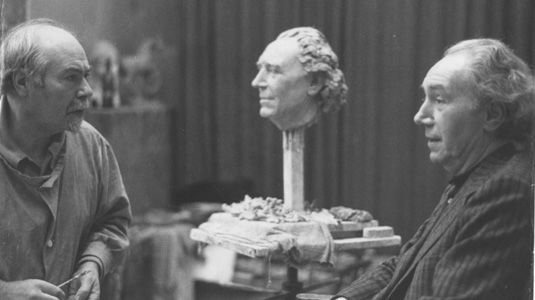
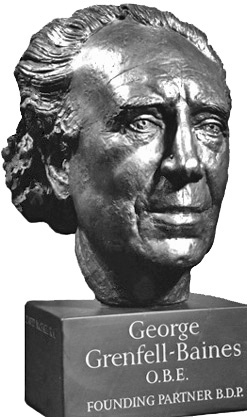
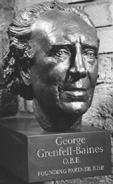
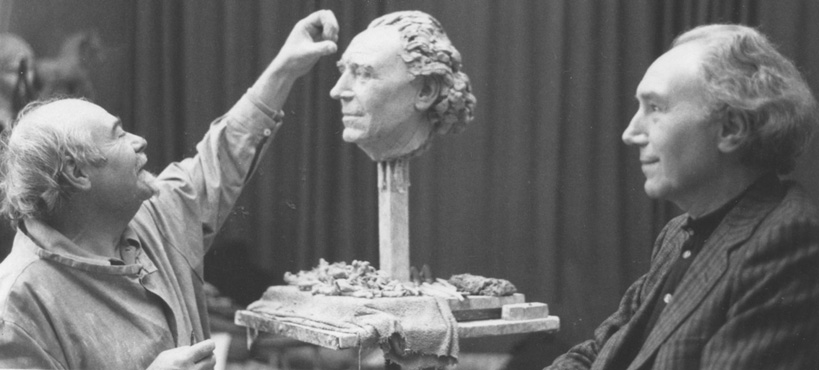
| Animals |
| Busts and Heads |
| Children |
| Churchill studies |
| Lettering |
| Medals coins plates |
| Reliefs |
| Stone carvings |
| Contemporary British Artists |
| On Epstein |
| Picasso |
| The art of portrait sculpture |
| Letters |
| Palliser |
| Son of Man |
| Press |
| Obituaries |
| Memorial address |